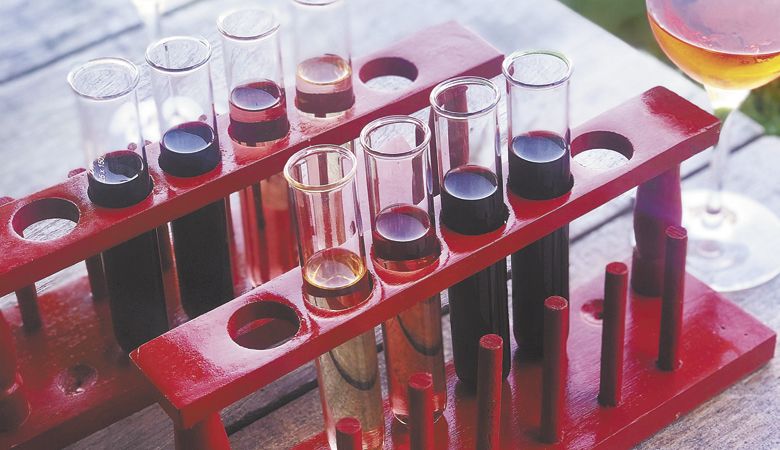Stay the Course
Despite obstacles, future appears clear
Will it ever end? The summer began with real hopes the pandemic would subside. At summer’s end, no end is in sight. Oregon wineries countered with strategic moves of their own. They now lure visitors almost exclusively outdoors, because it’s safer, with a bold new array of tasting venues and opportunities.
Visitors embrace it all: pods, tents, cabanas, romps and sips in vineyard rows, exotic food/wine pairings under the stars and more. Emphasis remains on smaller groups and events, as well as more private, distanced settings throughout a winery’s estate. It seems the right formula for drawing a public ready to visit wineries again but wanting to feel safe and comfortable doing it.
Oregon wineries, like Bluebird Hill Cellars, continue to adapt. Owners Neil and Sue Shay are eager to share their six-acre estate planted in the coastal hills west of Monroe in the Southern Willamette Valley. Last year, COVID-19 forced the couple to close their onsite B&B, not to mention temporarily extinguish the sales avenue of selling at wine festivals, which they personally enjoyed.
Faced with creating a new revenue stream, the Shays looked to Zoom. Today, among other emerging Oregon vintners, they remain stars of virtual wine tastings, booked solid with clients around the country, corporate and private. “The income we’re getting from virtual tastings now exceeds what we earned at the festivals,” Sue says.
Bluebird’s other successful pivot? Switching to outdoor tastings, adapting their spacious farmhouse porch and adding shelters on the grounds to accommodate visitors. These new spaces continue to fill up. Sue modestly believes the demand comes from pent-up wine lovers needing to get out and about, but it helps having a résumé filled with wine competition successes — the winery’s latest rising star: Chardonnay. Generous pours and authentic conversations with the Shays also add to the draw and repeat business.
Although Red Lily Vineyards has yet to resurrect its large concert venue — once attracting up to 1,000 people — the Jacksonville winery has switched to creating small, intimate outdoor sipping and dining spots. Owner Rachael Martin explains her innovative solution: “You can pick up a test tube rack of wine samples at the tasting room (inside a century-old barn) and go find a nice spot out on the grounds.” Robust crowds have descended all summer long on the 22 wineries of the Applegate Wine Trail for similar experiences.
Wineries intend to keep summer’s momentum going. So, expect even more outdoor options for fall and winter. It will be interesting to see what new visitor enticements we’re in for and how wineries plan to keep us dry and warm. Want to try a wine flight in the snow? You may soon have the chance.
Mark Chong is up for anything, as long as it is safe. A consummate wine enthusiast, the retired healthcare management consultant lives in Salem with wife Laura, a practicing physician. For decades, the couple has joined friends for travel around the state visiting wineries. At any one time, they are members of eight to 10 wine clubs. COVID-19 has failed to slow them down, and yet, he’s careful.
“I admire what wineries are doing to distance visitors,” he says. “I look out at the grounds and marvel at how they artistically use natural elements to help privatize and separate outdoor tables. It’s great to peruse the menu and make selections by cell phone. That way there’s minimal physical contact. You’re escorted to your pre-selected spot and food and drinks ordered are usually delivered all at once. Then you can serve yourselves at whatever pace you’d like.”
Chong emphasizes, “When we visit wineries, we stay away from indoor environments where there’s shared air with others. That’s where there’s a high risk in contacting COVID-19. We’re hopeful everyone gets vaccinated so we all can enjoy our wines indoors and outdoors.”
In the Gorge, Don McDermott of Scorched Earth Vineyard, notes pandemic regulations haven’t inhibited the area’s wineries from attracting large numbers of visitors this summer, but it’s not all about the bottom line for this passionate grower. The current president of the Columbia Gorge Winegrowers’ Association adds, “This is a public health matter that has become politicized,” he says. “It’s caused divisions and divisiveness among people here.”
Unfortunately, wildfires have become politicized too, but the damage, regarding the effect of smoke, has been a much softer blow this year.
“It was clear skies all summer long through harvest,” says McDermott. “Fruit harvested this year is looking spectacular.”
Smoke preparedness has made a difference for this year’s vintage. Because growers were inundated in 2020, localized smoke research has accelerated at Oregon State, Washington State and UC Davis, with educational tips and best practices relayed to wineries via entities like the Oregon Wine Board, which offers a Wildfire Smoke Tool Kit on its website.
As for the need to consult experts, it has been a much milder year in the Willamette Valley. “No smoke anywhere right now,” says Alex Sokol Blosser of Sokol Blosser Winery as he surveys his Dundee Hills vineyards during the winery’s final days of picking for 2021. From a statewide perspective, the president of the Oregon Winegrowers’ Association adds, “At this point, it looks like a good, clean harvest for all of us. Of course, that could change in a second.”
So far, the only irritation is smoke drifting in from elsewhere annoying guests sipping outdoors on otherwise glorious summer days, even in Southern Oregon where the Bootleg Fire, the third-largest wildfire in the state’s history, sizzled for days on end, but thankfully, the wind blew the smoke away from the vineyards. Hazes overhead generally have been from California blazes to the south. Again, no smoke impact to report.











